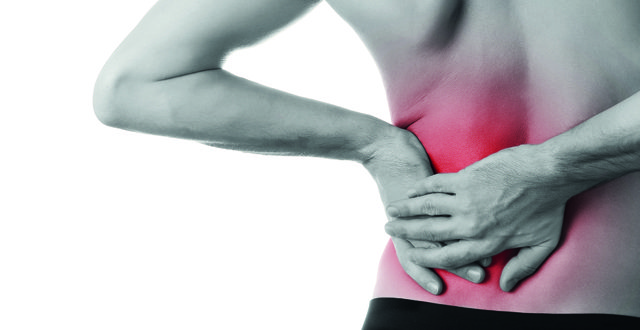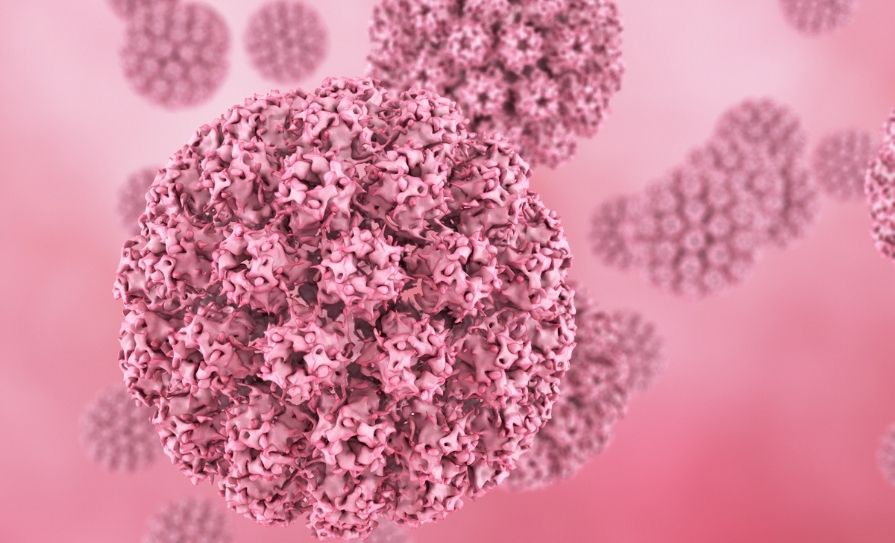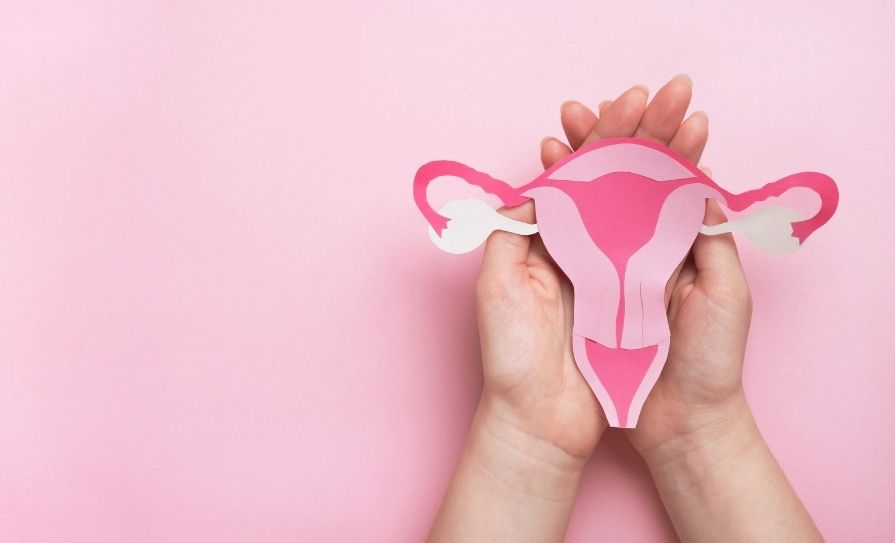Dr Dominic Hegarty gives a comprehensive overview of the latest approaches to chronic low back pain, including new restorative neurostimulation technology for refractory cases
In daily practice, chronic low back pain (CLBP) (ie, lower back pain without any radicular symptoms) still remains one of the most common reasons why an individual will see their GP. In fact, 85 per cent of individuals will experience an episode of mechanical LBP at some point during their lifetime (Gore 2012; Hand, 2014).
Typical causes of mechanical CLBP include (Weign et al, 2009):
7 per cent are due to lumbar strain (this is the most common cause of work-related disability in persons aged younger than 45 years in the US).
10 per cent are due to age-related degenerative changes in discs and facets.
4 per cent are due to herniated discs.
4 per cent are due to osteoporotic compression fractures.
3 per cent are due to spinal stenosi.
All other causes account for less than 1 per cent of cases.
In the majority of cases, the symptoms resolve after two-to-four weeks with conservative treatments but one in every five individuals will continue to have CLBP three months after the onset. For these individuals, a typical pattern will quickly emerge, including regular visits to the physiotherapist, the GP practice and other axillary healthcare services, such as chiropractors or acupuncture. The dependence on, and frustration with, the ongoing failure of oral analgesics to help improve the symptoms is obvious. Each ‘new therapy’ is seen as a ‘last-ditch’ attempt to break the pain cycle and get back to normality. For many, the persistent pain, daily consumption of oral medication and the impact on family life forces them into a miserable existence where their self-esteem and mental wellbeing suffer.
Why does CLBP persist in some individuals?
The pathophysiology of CLBP remains complex and multifaceted. Multiple anatomic structures and elements of the lumbar spine (ie, bones, ligaments, tendons, discs, muscle) are all suspected to have a role and are generally referred to a ‘mechanical’ lower back pain. The lumbar spine also has an extensive sensory innervation network that can generate nociceptive signals representing responses to tissue-damaging stimuli. While most chronic pain cases are likely to involve mixed nociceptive and neuropathic aetiologies, the clinical description of CLBP tends to suggest that the nociceptive system is the primary pathway. The fact that most CLBP does not respond to traditional agents used to manage neuropathic pain would support this theory.
Nevertheless, as with any medical condition, it is prudent to ensure that every effort is made to exclude important and treatable causes that might mimic the presenting symptoms. For example, one must consider the possibility of discogenic LBP, lumbar facet syndrome, myofascial pain, sacroiliac joint syndrome and malignancy. Each of these diagnoses require specific investigations and each have their own treatment pathway which is outside the scope of this article.
Trauma and CLBP
CLBP generally results from an acute traumatic event, but it may also be caused by cumulative trauma (Heuch et al, 1979). The degree or severity of an acute traumatic event varies widely and can be a simple as twisting one’s back, to being involved in a motor vehicle collision. Mechanical LBP due to cumulative trauma tends to occur more commonly in the workplace. Patients generally present with a history of an inciting event that produced immediate LBP. The most commonly-reported histories include the following:
Lifting and/or twisting while holding a heavy object (ie, box, child or less able individual).
Operating a machine that vibrates.
Prolonged sitting (ie, long-distance truck driving, computer/desk work).
Involvement in a motor vehicle collision.
Falls.
Body mass index
Using data from the 2015 National Health Interview Survey, a study by Peng et al (2018) indicated that being overweight and obese are both risk factors for LBP. It has been proposed that compared with persons of normal weight, the adjusted odds ratios for LBP in persons with overweight or obesity were 1.21 and 1.55, respectively. However, sex and ethnicity also have a role to play. For example, the adjusted odds ratios for non-white men and women of normal weight were lower than the LBP risk for normal-weight white men (Peng et al, 2018).
Lifestyle factors
The exact impact of a particular lifestyle has on developing CLBP is very difficult to interpret. For example, in a systematic study review (between 1998-2006), Chen et al (2009) investigated whether a sedentary lifestyle, defined as including sitting for prolonged periods at work and during leisure time, was a risk factor for LBP. It was concluded that a sedentary lifestyle alone does not lead to LBP.
In a birth cohort study from 1980-2008, Rivinoja et al (2011) investigated whether lifestyle factors, such as smoking, being overweight or obese, and participating in sports at age 14 years would predict hospitalisations in adulthood for LBP and sciatica. The authors found that 119 females and 254 males had been hospitalised at least once because of LBP or sciatica. Females who were overweight had an increased risk of second-time hospitalisation and surgery. Smoking in males was linked with an increased risk of first-time non-surgical hospitalisation and second-time hospitalisation for surgical treatment.
Pain assessment in an individual with CLBP
Standard pain assessment should include a record of the pattern of the pain and tender points. Consider using a body-map diagram, as this helps monitor progress as well. Pain intensity can be simply recorded using a numerical rating score (NRS, 0-10 score) or the PainDetect score (for neuropathic pain). Some estimation of the impact on daily activity informally or more formally using a questionnaire such as the Brief Pain Inventory can be used. Typically, this information can be taken within five minutes and will provide reliable information.
Establish what caused the injury
Where possible, ask the individual what they feel was the key triggering event for them when it started. Knowledge of the ‘mechanism’ of injury may help guide the treatment options. For example, was there a twisting motion or a sudden acceleration/deacceleration-type injury involved (road traffic accident), or was this a low-grade repetitive-type injury developed over time?
If this was a workplace injury, it is also worth establishing the time of the injury and the impact on work pattern (ie, sick leave pattern). Knowledge about the relationship with the employer and whether or not there is litigation pending or planned can be very insightful. This may uncover hidden stress factors, including some that may need to be considered in the management plan. If a physiotherapist has already reviewed or treated the individual, then this may also give you valuable insight into the cause and what needs to be considered next.
Investigations
Laboratory studies
All investigations should be age- and symptom-appropriate. For example, if the history elicits reports of fever, night sweats and chills, that might suggest other causes for the low back pain; then, at a minimum, obtain a full blood count, erythrocyte sedimentation rate, and urinalysis to rule out cancer or infection. Serum and urine electrophoresis studies may help to rule out multiple myeloma at an early stage when radiographic imaging studies appear negative or inconclusive.
Biochemistry analysis may also help ensure adequate renal and liver function before starting medication such as non-steroidal anti-inflammatories and it is worth quantifying the mineral and vitamin serum levels ( ie, vitamin D, magnesium, zinc, etc)
Imaging studies
The association between symptoms of mechanical causes of LBP and imaging results is weak. The Quebec Task Force of Spinal Disorders (QTFSD) suggests that early radiographs are necessary only if the patient has neurologic deficits, fever, trauma, age older than 50 years or younger than 20 years, or signs of neoplasm. Persistent mechanical LBP may require additional imaging studies, including MRI and CT scanning.
Plain x-ray: Anteroposterior and lateral views should be used on plain films unless spondylolysis is suggested, in which case oblique views are needed.
MRI: MRI is superior to CT scanning for detection of many conditions because it presents soft tissue detail and multiple planar points of view; it should be used if infection, cancer, or persistent neurologic deficit are strongly suggested.
Thermography has no known role in the evaluation of mechanical LBP.
In some cases, the radiologist may recommend additional imaging to facilitate or exclude a diagnosis.
Designing a rehabilitation programme
The treatment programme for CLBP must have specific functional goals and can be outlined in the following six steps (Airaksinen et al, 2006):
Control of pain and the inflammatory process — pain treatment should be initiated early and efficiently to gain control. Most individuals respond to short-term but regular anti-inflammatory medication and a combination analgesic (paracetamol/tramadol, paracetamol/codeine). Ice, transcutaneous electrical nerve stimulation (TENS) and periods of rest may help with controlling the pain and the inflammatory process. Excessive bed-rest, however, may be detrimental by leading to lumbar segment motion, loss of muscle strength, and general deconditioning with blunting of motivation.
Restoration of joint range of movement and soft tissue extensibility — extension exercises may reduce neural tension. Flexion exercises reduce articular weight-bearing stress to the facet joints and stretch the dorsolumbar fascia. The use of ultrasound therapy may improve collagen extensibility.
Improvement of muscular strength and endurance — usually, this involves engagement with a physiotherapist. Exercise training can begin as soon as possible after the patient has pain under control. The key is to attain adequate musculoligamentous control of lumbar spine forces to minimise the risk of repetitive injury to the intervertebral disks, facet joints, and surrounding structures. Start with isometrics, then progress to isotonic exercises with effort directed at concentric strengthening.
Co-ordination retraining — dynamic exercise in a structured training programme maximises co-ordinated muscle group activities that lead to postural control and the fusion of muscle control with spine stability.
Improvement of general cardiovascular condition — patients are encouraged to remain active and to initiate brisk walking programmes, aquatic activities, or use of stationary bicycles/stair steppers. These activities can increase endorphin levels, promoting a sense of well-being, and allow the patient to perform at a higher level of function before perceiving pain.
Maintenance exercise programmes — a home programme is developed within the tolerance and ability of the patient in order to encourage continued exercise after discharge from physical therapy. Yoga, swimming, and other light exercise can all complement the long-term recovery and individuals should be encouraged to remain active.
Is there a specific physical therapy programme that should be used?
There are as many answers as there are physiotherapists! For example, Sertpoyraz et al (2009) compared isokinetic and standard exercise programmes for chronic LBP. Pain, mobility, disability, psychological status and muscle strength were measured. Forty patients were randomly assigned to a programme that took place in an outpatient rehabilitation clinic. No statistically-significant difference was found between the two programmes with regard to their effect in the treatment of low back pain.
A prospective study by Ben-Ami et al (2017) of 189 patients with chronic LBP found that those who underwent a physical therapy programme focused on dealing with obstacles to physical activity (an enhanced transtheoretical model intervention (ETMI)), including low self-efficacy and fear avoidance in order to increase recreational physical activity, experienced better reduction in long-term disability than patients who underwent usual physical therapy. The investigators determined that at 12-month follow-up, patients who underwent the ETMI had significantly better results with regard to worst pain, physical activity and physical health (Ben-Ami et al, 2017).
This essentially supports the concept that exercise and insight are a valuable combination and should be encouraged.
What if this fails to control CLBP?
Unfortunately, despite the best intentions, some individuals fail to respond to the ‘standard therapy’. The recurrence of CLBP at one year is 62 per cent. At two years, 80 per cent of patients have had one or more recurrences. Many continue to have significant CLBP, with a pain intensity of six out of 10 or greater affecting them on daily basis. Many individuals struggle to deal with this pain and even exercise becomes an issue, ultimately compounding the negative cycle of pain and inactivity.
It has been observed that the lumbar paraspinal muscles are smaller in patients with chronic LBP (Cooper et al, 1992) than in healthy individuals of similar age (Danneels et al, 2000). A reduction in the size of multifidus has also been reported in acute LBP (Hinds et al, 1994), suggesting that the atrophy starts soon after an injury. Recent animal work has shown rapid changes in cross-sectional area (CSA) in the multifidus muscle following discrete injury to an intervertebral disc (Hodges et al, 2006).
Taken together, this is an important finding, because the paraspinous and multifidus muscles automatically responds to changes in load in the lumbar area and can be described as dynamic segmental stabilisers. They serve to deal with daily workload on the lumbar area and if injured, then this places even greater strain on the region. Rebuilding these muscles is possible with targeted extensive physiotherapy but requires ongoing treatment by the individual.
Recent developments in technology have allowed the stimulation of the multifidus muscle through a specific nerve in the lumbar region. This has been shown not only to improve pain levels, but also daily activity and quality of life. The device known as ‘Reactiv8’ has been developed by an Irish company (Mainstay) and is CE marking for global distribution. It has completed clinical trials in the US, Europe and Australia. It has recently been approved for implantation in Ireland by the main health insurers.
The device acts to stimulate the multifidus muscle, inhibit the pain pathway and restore muscle strength using short and regular treatment periods to ‘train’ the muscle. It is a short, relatively straightforward surgical procedure to implant the device when undertaken by trained consultants.
Who may benefit?
The use of this technology, is designed for specific types of CLBP. Table 2 outlines the individuals who will benefit most for this. In principle, it is best suited to individuals with primarily nociceptive mechanical CLBP. The best clinical outcomes are noted in those individuals who understand the need to undertake physical activity as part of the rehabilitation process.
What is the likely outcome?
Firstly, the present data supports a significant and consistent improvement (>50 per cent) in all the domains, including pain intensity , disability scores (ODI), and quality-of-life score (EQ-5D). Opioid consumption has been shown to be eliminated or significantly reduced in the majority of cases. Secondly, these improvements can be maintained over 12 months, thereby offering the individual a real chance of gaining control over their chronic pain.
Conclusion and prognosis
In general, the earlier CLBP is controlled, the greater the recovery potential. Activity is encouraged and should be assisted by suitable analgesics as soon as possible. At one month, 35 per cent of patients can be expected to recover; at three months, 85 per cent have recovered; and at six months, 95 per cent have recovered. Unfortunately, the recurrence of CLBP at one year is 62 per cent. At two years, 80 per cent of patients have had one or more recurrences.
Failure of a patient to recover should lead the clinician to undertake and extensively search into the cause of the back pain, including the possibility of recurrent back injuries that may have been considered insignificant previously.
Physical rehabilitation is a key element in the treatment pathway. Analgesics should be aimed at offering pain control to continue with the physical therapy. A graded, structured programme, focused on exercise and insight, is important if the individual is to recover as much as possible.
For refractory cases, the availability of new restorative neurostimulation technology for CLBP can offer a real solution and improve the long-term outcome. A simple pain consultant assessment can change an individual’s quality-of-life for good.
Disclosure: Dr Hegarty is trained in all advanced pain interventional procedures, including the neuromodulation implantation techniques mentioned. He remains an independent clinician and has received no payment by Mainstay to endorse the Reactiv8 device.
References available on request













Leave a Reply
You must be logged in to post a comment.